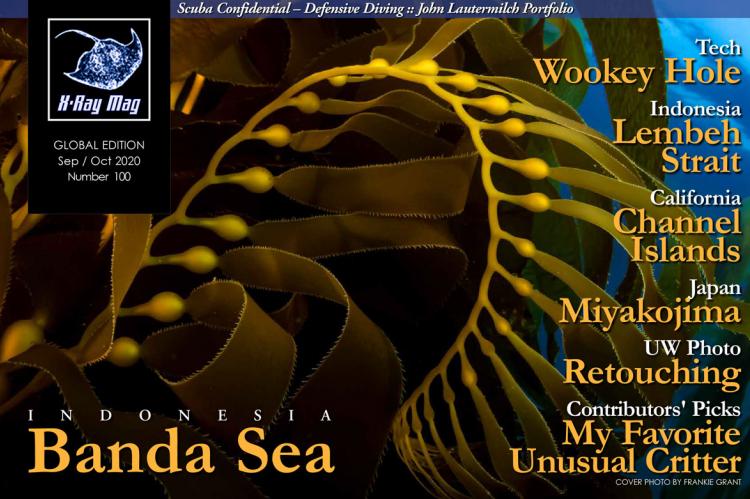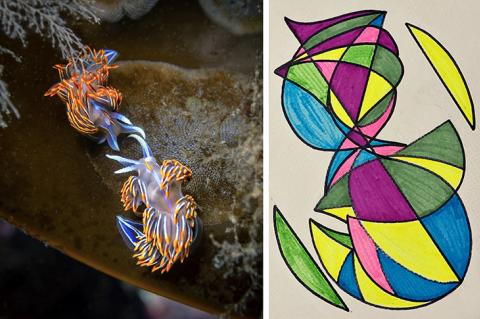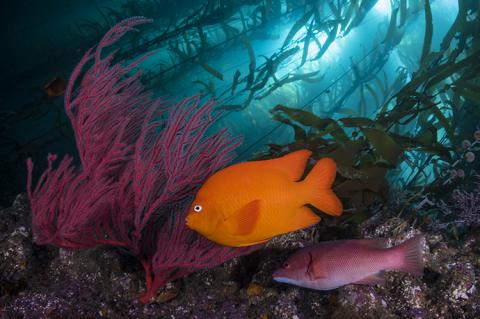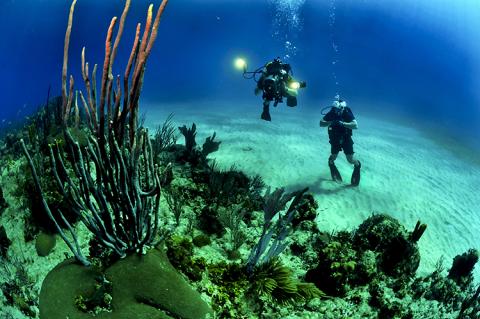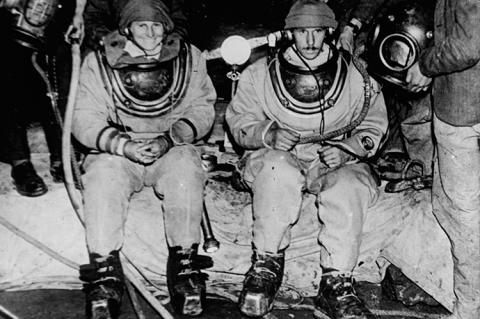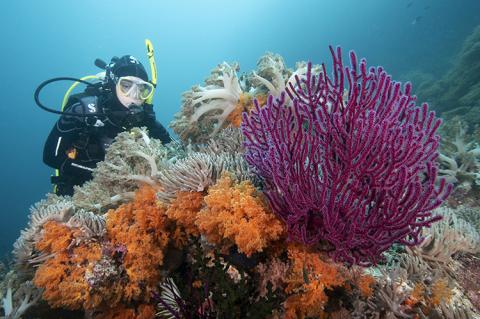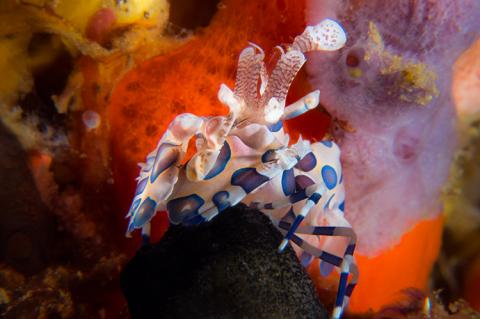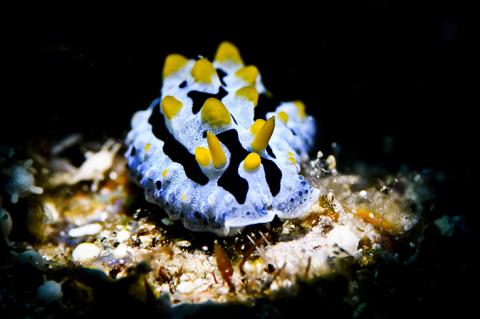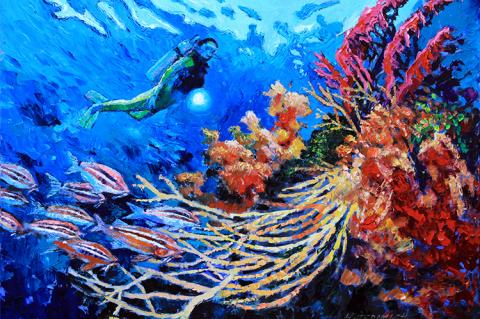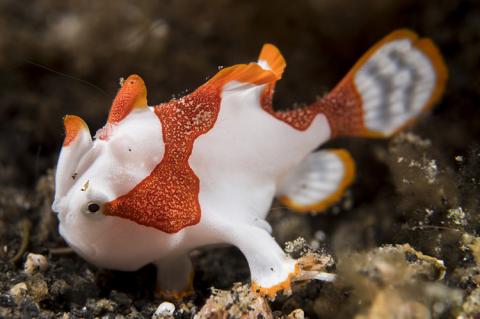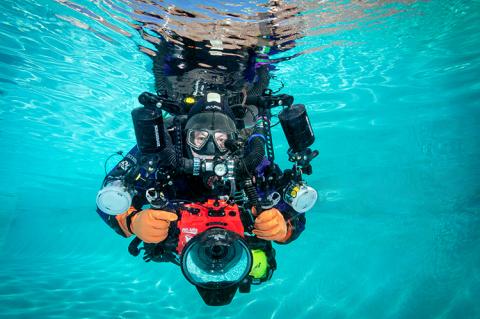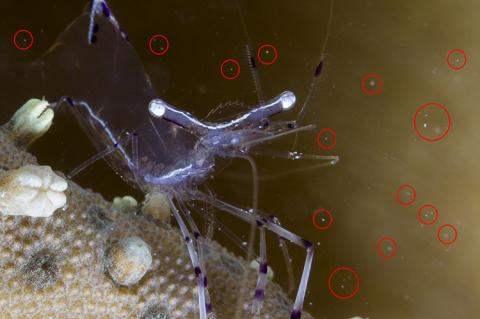X-Ray Mag #100
Main features in this issue include:
Art Inspired by Underwater Images
Underwater photographer and regular contributor Olga Torrey talks about how fine art and photography can influence each other, as she illustrates in her recent works undertaken in the X-Ray Mag Photo Challenge, which asks participants, who are homebound during the coronavirus lockdown, to recreate an underwater image they have taken with objects found around the home or things they can photograph from their windows.
As a lifetime member of the Art Student League in New York City, I have studied both realistic and abstract painting. I often use my art training to help my photography, both above and below the water’s surface.
California's Channel Islands: Kelp Diving on the US West Coast
Due to their unique position relative to the eastern Pacific current, or the California Current, the Channel Islands off California’s coast receive an ideal amount of nutrients and water circulation for optimum growth of California giant kelp. This colonial algae forms forests over the rocky reefs and walls surrounding the islands, and act as one of the world’s most productive marine ecosystems.
After a smooth night crossing from San Diego, I awoke to the sound of a freed anchor and the gentle tug as it sat firm in the sand. I rose to the deck, eyes wide once the morning’s coffee was prepared, to an almost glass-like sea near the southern tip of San Clemente Island.
Defensive Diving, Part 1
When we learn to scuba dive, we are given a little knowledge and taught some basic skills. We take a theory test and demonstrate that we can perform the skills and that’s it, we get a licence.
Subsequently, as we do more diving, we gradually improve our skills and we experience various problems. By achieving mastery of the skills and dealing with the issues we encounter, we acquire the ability to anticipate problems and to avoid or manage dangerous situations.
Diving Then and Now: The Wookey Hole Caves—Birthplace of Cave Diving
Cave diving has progressed by leaps and bounds since its origins back in 1935. However, how many of us today really know what it was like to don a hard-hat suit, connect a surface-supplied, hand-pumped umbilical cord and literally walk along the cave floor in pitch black waters? The beginnings of cave diving can be traced to the Wookey Hole Caves in England.
Cave diving was in its infancy during the 1930s. In the beginning, explorers did not look at cave diving as a form of sport or a diving method. Rather, it was more of a means to reach a specific end while dry caving.
Indonesia's Banda Sea
Five minutes into my first dive in the Banda Sea, I came face-to-face with a scalloped hammerhead shark, gliding effortlessly in its underwater realm as it emerged from the depths to investigate the alien visitors descending from above. A second hammerhead swam past a moment later but was less bold in its approach and quickly disappeared back into the abyss.
The Banda Sea is a region within the Indonesian archipelago, located in Southeast Asia, between the Indian and Pacific Oceans. It is situated south of the Maluku Islands, east of the island of Sulawesi and north of Timor Island.
Indonesia's Lembeh Strait: Relax & Enjoy Muck Diving & More
For underwater photographers, when we talk about Lembeh Strait in Indonesia, lots of macro subjects and small critters come to mind. “Muck diving,” which involves diving in muddy areas where lots of small animals can be found, is actually the main business of the localresorts and dive centres. But as you will find out in this article, there are lots of other things to see here too.
The beautiful coral reefs in the northern end of Lembeh Strait are lesser known. They are composed of flat coral gardens with dense populations of all kinds of corals and sponges but also beautifully overgrown drop-offs with large coral fans.
Japan's Miyakojima
Year 2020. The coronavirus pandemic has confronted the world with an unprecedented situation. Many countries went into lockdown, and as a result, many people were forced to stay indoors, including myself in Japan. Although Japan never went into an official “lockdown”—it instead went into a so-called state of emergency—I could not wait to get out of the Tokyo metropolis as soon as restrictions were lifted.
I had stayed indoors for far too long—three months—and my body was craving the ocean as it never had before. As traveling to countries outside of Japan was not possible due to the pandemic, I decided to take on an excursion to the warmest place possible within Japan: the Okinawa Islands.
John Lautermilch Portfolio
John Lautermilch, an award-winning American artist from Saint Louis, Missouri, and graduate of the Washington University School of Fine Arts, has created paintings for 60 years, which have been shown in numerous solo exhibitions and include commissions for individual collectors and institutions. Among his plethora of paintings of the natural world are artworks featuring vivid and dynamic underwater scenes with divers and coral reefs.
"I am deeply worried about the future of our oceans. It is clear that our current path is not sustainable. I think the more people are exposed to the endless beauty of the underwater world, the more likely they are to cherish it and want to preserve it."
— John Lautermilch
My Favorite Unusual Critter Dive: Contributors' Picks
We asked our contributors what their favorite unusual critter dive was and they answered with stories and photos of weird and wonderful creatures, big and small, giving first-hand accounts of their often bizarre behaviors under the waves.
X-Ray Mag contributors reveal the strange, rare or other-worldly yet endearing denizens of the underwater realm—from the topical paradise of Indonesia and the Philippines to the temperate waters off California, British Columbia, South Africa and South Australia, to the frigid waters of the
Pool Diving Adventure
The Northeast US dive season usually starts with divers dusting off the cobwebs at Dutch Springs in Bethlehem, Pennsylvania. This year, the season started in the middle of a pandemic. Dutch Springs did not open in April, as it does most years. If you are a technical diver that is drying out, what is one to do? In our case, we took our drysuits, rebreathers, camera housings and sidemount rigs to our friend Gregory Borodiansky’s pool.
Gregory is a technical diving instructor and teaches a number of different rebreathers. Living in Staten Island, he has a 2m (7ft) deep, heated pool in his backyard. This was the only place for us to get wet!
Retouching Underwater Images
It should not happen but sometimes it does anyway: those annoying little white dots in our underwater images, which detract from the overall impression of the photograph. Known as backscatter, these dots appear when small particles in the water reflect the light from a strobe. The more directly the strobe light hits a subject, the higher the risk of backscatter. That is why a strobe should not be pointed straight at a subject.
Not much can be done with an underwater image that is covered with “white snow,” but to get rid of a few backscatter dots is no big deal.


